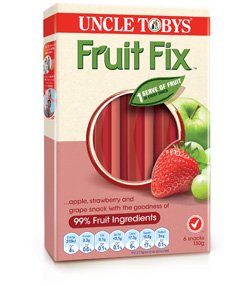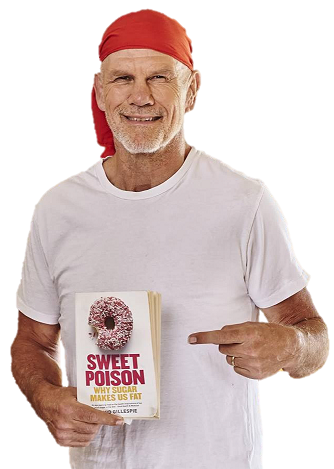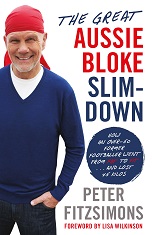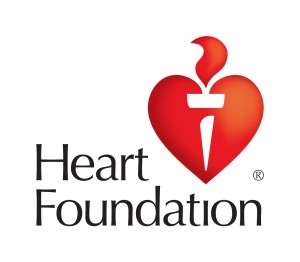
Last week the WHO (World Health Organization) leaked a draft report about sugar. The report will tell the world’s health authorities that they should be severely limiting the amount of sugar we all eat. It will recommend that we consume no more than 5 teaspoons of sugar a day. Given the average Australian is putting away somewhere closer to 35-45 teaspoons a day, it’s a very big call indeed.
The WHO is the health policy unit of the United Nations. Its aim is provide evidence based leadership on health research. It is well funded, free from corporate influence and motivated entirely by a desire to ensure that the 193 UN member countries get the best possible, evidence based, health advice. The WHO doesn’t run a Tick program or receive sponsorship from the processed food industry. Indeed it has even recently taken the extraordinary step of banning one ‘research’ group sponsored by industry from participating in its decision making processes.
Shrinath Reddy, a cardiologist and member of the WHO panel of experts, told the Sunday Times the WHO is moving on sugar because “There is overwhelming evidence coming out about sugar-sweetened beverages and other sugar consumption links to obesity, diabetes and even cardiovascular disease.”
The worldwide burden for those diseases is accelerating very quickly. According to a new report out this week the number of overweight and obese in the developing world has quadrupled since 1980.
A billion people in the developing world are now on the chronic disease express. But don’t worry, we still win. Less than a third of the population in China and India is overweight compared to our two thirds or more. They are just starting to get the hang of this Western Diet Thingy, so expect very big rises in the very near future.
The WHO have looked dispassionately at the evidence and have seen the tsunami of human misery caused by sugar coming for more than a decade They publicly warned that sugar was strongly implicated in obesity, type II diabetes, hypertension and heart disease in 2003.
They then took the extraordinary step of telling member governments that they should ensure their populations limited sugar consumption to a maximum of 10% of total calories (around 10 teaspoons of sugar a day – the same amount you would find in a Coke or a large Apple Juice). They did this despite an overt and vicious public campaign conducted by the Food industry.
The US sugar lobby demanded that the US Congress end its $406 million funding of the WHO. This is the same WHO that co-ordinates global action against epidemics like HIV, Bird Flu and SARS. But the US food industry wanted it destroyed because it dared to suggest we eat less sugar.
The lobbying behind the scenes was even more ruthless. Derek Yach, the WHO Executive Director who drove the sugar reduction policy work told a British documentary crew in 2004, that millions were spent trying to torpedo the policy. US Senators wrote directly to the WHO threatening its very existence. They also threatened the Food and Agriculture Organisation (a sister UN department concerned with food production) with a cut in funding.
In the end the food industry campaign paid off. The WHO removed its 10% recommendation from the final text of its recommendation. It was watered down to a suggestion that people ‘cut the amount of sugar in the diet’.
As one of the people involved at the time, Professor Phillip James, Chairman of the International Obesity Taskforce, predicted “we’ll end up with nice little policies telling [us] to have ‘just a bit less sugar and a little more balanced diet’ the nonsense that’s gone on since the Second World War during which time we’ve had this vast epidemic of heart disease, diabetes and obesity.”
Even the briefest glance at the official dietary guidance on sugar in Australia or the UK will tell you Professor James wasn’t too far from the mark with his prediction. Our guidelines are stuffed with words like ‘moderation’ and ‘balanced diet’ when it comes to sugar.
But the thing about evidence is, it doesn’t go away. And in the 10 years since the WHO last tried to save us from sugar, the evidence has become overwhelming (to quote Dr Reddy).
The WHO got a serious kicking when they tried to suggest a 10 teaspoon upper limit on sugar consumption, so you can imagine that the evidence they have reviewed must be truly overpowering to have them step up to the plate again. But this time they want the limit to be 5% (5 teaspoons) or less. I hope they’re wearing their flak jackets because I suspect a whole heap of blood money from the processed food industry is pouring into ‘lobbyists’ pockets as we speak.
The WHO is not running down sugar because it hates sugar farmers. It is not doing it because it likes getting mauled by the US Government (and its sponsors). It’s doing it because we will all suffer immensely if we don’t act on its advice.
I don’t know if the WHO can withstand the punishment they are about to receive. And I have no confidence that their recommended limit will make it through the firestorm of food industry sponsored ‘science’ which will suddenly surface. But I do know that when good people decide the evidence is so powerful that they should say it anyway, then the rest of us better be bloody listening.



















Recent Comments